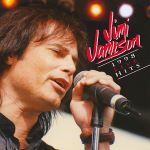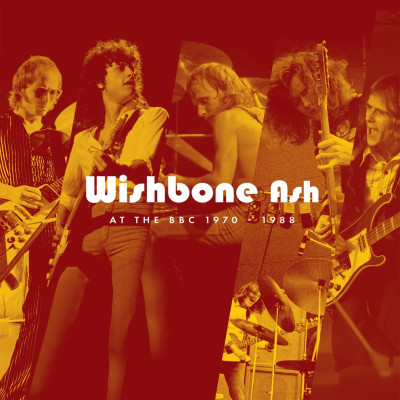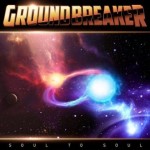Share the post "Book review: Hello Tolworth, I’m Ziggy by Tim Harrison"

Good Life Publishing [Publication date:17.09.21]
‘Hello Tolworth, I’m Ziggy, The life And times of the Toby Jug pub – And The Launch of David Bowie’s Most Famous Character’ is a meticulously researched book that is at its best when covering Bowie and an array of other ground breaking gigs at the Toby Jug in Tolworth, South West London.
It’s a labour of love which provides the local history context of the times, but is less interesting to music fans when covering the nefarious nature of some of the pubs best forgotten episodes.
Overall, it’s an impressive snapshot of a time when the nascent rock, blues and psychedelic scene was about the break out of the pubs such as the Toby Jug and into bigger venues.
Ultimately in the case of David Bowie, Led Zeppelin, Jethro Tull and ELO etc, it led to international success.
Musically speaking, author Tim Harrison sums thing up thus: “It was a time before mobile phones, when bands could make mistakes without social media amplifying them.”
The book also provides an excellently explored broader context, when he says:” In some ways the tale of the Toby Jug mirrors the rise and fall of all Britain’s pubs.”
Bowie aside, there are short snippets of gigs by the likes of local heroes The Yardbirds, Savoy Brown, Free, Jethro Tull, Led Zeppelin, Taste, Family, Joe Cocker, Edgar Broughton, Chicken Shack, Fleetwood Mac, The Groundhogs, Stray, Ten Years After, Traffic, Killing Floor as well as Captain Beefheart, John Lee Hooker, Freddie King, Howlin’ Wolf, Status Quo, ELO and many more.
The strength of the book is the way it draws on first hand accounts from 250 interviews, including perceptive comments from former National Flag and Little Sister guitarist Gary Brewer, who recalls seeing Captain Beefheart opening for John Mayall: “Everyone knew that Captain Beefheart was connected with Frank Zappa, so it seemed amazing to see him in Tolworth. Ry Cooder wasn’t in the line-up (the band did include Jerry Handley, on bass and Alex Sinclair on guitar); a shame as Little Sister was very influenced by Cooder.”
Speaking after a Lindisfarne gig, he summed up the high standing of the music venue: “I never went to the Toby Jug and came out disappointed.”
More specifically, when recalling former Cream lyricist Pete Brown, he offers the most esoteric observation in the book: “He always got in where the dust doesn’t settle. I mean the nooks and corners.”
Audience member Alan Wilkinson was one of 50 odd people to catch Jethro Tull and he remembers that: “After playing a couple of numbers on guitar (Ian) Anderson delved into a plastic carrier bag to pull out anther instrument, and said: ‘I think I’m breaking new ground here’, then began playing the flute.”
But it’s David Bowie who lies at the heart of the author’s affections and he is given the opening chapter for his Toby Jug appearance on February the 10th 1972.
There’s a significant quote from an early back stage encounter between the relief publican’s grandson Alan Stevens and Bowie who is described as “a pale gaunt figure, stripped to the waist.”
“Here’s your Brown ale Mr Bowie” said Alan.
The man smiled. “Tonight it’s not Mr. Bowie, its Ziggy.”
Harrison provides a lovely mix of context and anticipation by researching audience member’s musical habits, which led them to see Bowie on the night when he launched Ziggy Stardust at the Toby Jug.
As for the show itself: ‘At 9pm as Beethoven died away, Woody began a pounding beat and Ziggy (fortified by a final swig of Brown ale to wet his throat) walked on stage to join his Spiders.
As the drummer, Woody had the best view of the Toby audience from his perch behind the kit. And recalls that: “about 60 people were there.”’
The neutral reader might argue that the Led Zeppelin story (you will have to read the
book) holds more weight in terms of the band’s global impact, but it is Bowie who makes the biggest impression.
Harrison wisely draws on plenty of first hand accounts to illustrate the impact of his androgynous hero.
All that said, this book is as much an account of the local (South West London) social and economic environment of the time, reaching all the way back to 1928 for an initial meeting between Carrington the brewers and the local council.
There’s a succession of rotary links, weddings, tales of spying and even a chapter on Freddie Lennon (John’s dad) who worked in the pub for a while.
But it’s “The Music Years 1962 -72” which provides the major interest. There are also chronological chapters on disco, punk and the eventual decline of the pub.
Ultimately, ‘Hello Tolworth I’m Ziggy’ provides the historical and social context leading to rock in the suburbs. It’s packed with photos, flyers, logos and an excellent bibliography, and only lacks a concise index for those of us restless to read about our respective musical heroes.
The fact that Tim Harrison manages to identify so many significant political, historic and musical strains, with which to uncover the local origins of some of the best music of the era in a local roadhouse boozer, is testament to both his organisational and writing skills.
Both those aspects easily match his passion for his subject matter. ****
Review by Pete Feenstra
Featured Artist: JOSH TAERK
Since early 2020 Josh has been entertaining us with exclusive monthly live sessions,
Check out videos here: https://www.facebook.com/getreadytorockradio
David Randall presents a weekly show on Get Ready to ROCK! Radio, Sundays at 22:00 GMT, repeated on Mondays and Fridays), when he invites listeners to ‘Assume The Position’. The show signposts forthcoming gigs and tours and latest additions at getreadytorock.com. First broadcast on 7 December 2025.
UK Blues Broadcaster of the Year (2020 and 2021 Finalist) Pete Feenstra presents his weekly Rock & Blues Show on Tuesday at 19:00 GMT as part of a five hour blues rock marathon “Tuesday is Bluesday at GRTR!”. The show is repeated on Wednesdays at 22:00, Fridays at 20:00). First broadcast on 25 November 2025
How to Listen Live?
Click the programming image at the top of the page (top right of page if using desktop)
Get Ready to ROCK! Radio is also in iTunes under Internet Radio/Classic Rock
Listen in via the Tunein app and search for “Get Ready to ROCK!” and save as favourite.
More information and links at our radio website where you can listen live or listen again to shows via the presenter pages: getreadytorockradio.com
Power Plays w/c 1 December 2025
We feature all the artists selected in this sequence in 2025.
Featured Albums w/c 1 December 2025
09:00-12:00 The Best of 2003 – 2025 (Melodic Rock)
12:00-13:00 The Best of 2003 – 2025 (Melodic Hard Rock)
14:00-16:00 The Best of 2003 – 2025 (Singer Songwriter)
Our occasional Newsletter signposts latest additions to the website(s). We also include a selection of recent top albums, based on GRTR! reviewer ratings. The newsletter is sent out a few times a year.
If you’d like to register to receive this occasional mailing please complete the form:
If using a smartphone/tablet please tap here or re-orientate your device
(Note that this registration is separate from site registration which allows you to leave comments and receive daily emails about new content. If you wish to register for this – in addition or separately – please click or tap here – for more information – the form is at the foot of each page. Please read our privacy policy when opting-in to receive emails.
Recent (last 30 days)
Share the post "Book review: Hello Tolworth, I’m Ziggy by Tim Harrison"


























 PDF - you can delete unwanted sections
PDF - you can delete unwanted sections





































